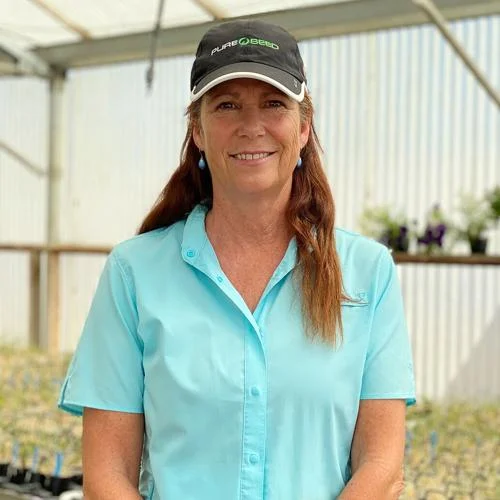How Oregon grass seed found its way to the World Cup
CANBY, Ore. — Like billions of people worldwide, Crystal Rose-Fricker has found herself glued to coverage of the 2022 FIFA World Cup in Qatar.
But unlike most soccer fanatics, Rose-Fricker is paying close attention to one detail in particular — the quality of the playing surface.
Rose-Fricker, president of Pure Seed in Canby, Ore., has a keen interest in this year’s tournament, with her company providing tens of millions of pounds of grass seed for the eight stadiums and 71 practice fields. It is a monumental task, made possible by years of research and development.
The result is that Oregon turf is again featured on the world stage. According to NBC Sports, an estimated 5 billion viewers are expected to tune in to the World Cup.
“It’s a long process of building relationships and connecting Oregon grass seed with that end market,” Rose-Fricker said. “This is one example of an international connection.”
Building relationships
Pure Seed is a wholesale producer of commercial turf and forage grasses, founded by Rose-Fricker’s father, Bill Rose.
Over the course of five decades, the company has supplied grass seed for golf courses, football fields and soccer pitches around the world. New varieties are tested at Pure Seed’s research farms in Oregon and North Carolina, carefully bred to match each customer’s unique needs.
“You have to go out and travel the world,” Rose-Fricker said. “You have to meet and work with people.”
In the case of the 2022 World Cup, Rose-Fricker said the opportunity came thanks to a collaboration with another turf grass producer, Atlas Turf International.
About eight years ago, Pure Seed and Atlas Turf, based in LaGrange, Ga., started a joint venture called Pure Turf, marketing a perennial ryegrass blend named Pure Sport.
While it was Pure Seed that developed the variety, it was Atlas Turf that had connections to markets in the Middle East, where the company sells seashore paspalum — a type of warm-season and salt-tolerant grass well suited to the region.
John Holmes, president of Atlas Turf, said it was 2016 when they were contacted by Aspire Zone, a sports training facility in Qatar, interested in testing grass seed blends.
Officials there ultimately selected paspalum as a base for the fields, over-seeded with Pure Sport, the ryegrass blend cultivated in Oregon.
That is what is now being used for the World Cup, having demonstrated it can withstand Qatar’s hot climate and the rigors of 64 soccer games played in 29 days.
“It wasn’t just something that happened overnight,” Holmes said. “It was a long process, working with the client there and working with what they need, and making sure their specifications were met.”
Breeding varieties
Breeding grass seed itself is a lengthy process that takes about 10 years, Rose-Fricker said.
Pure Seed is constantly looking for traits to make grass seed more drought-tolerant and disease-resistant, she said. The company contracts with growers in the Willamette Valley to grow the seed, which is then distributed globally.
“As you know, you can’t just create seed next week,” Rose-Fricker said. “It’s not a widget you can build in a factory. It’s a living plant.”
In addition to heat and disease resilience, Rose-Fricker said the grass had to be shade-tolerant given the partially closed stadium roofs.
Shipping the seed in time for the World Cup was another logistical challenge, Holmes said. The seed was shipped in May via ocean carrier, arriving in mid-July. Once in Qatar, groundskeepers had a 10-day window to plant the seed in October so it would be ready for the start of the tournament on Nov. 20.
Holmes said he is so far pleased with how the grass has performed.
“It’s been so exciting to see how well it’s held up during the matches,” he said. “So far, I don’t believe there have been any turf-related injuries.”
Rose-Fricker said the event is another example of how Oregon grass seed growers leave their imprint all over the world.
“I just think our growers deserve to know their grass is being used around the world, and it’s making a difference,” she said.
Originally published by George Plaven, Capital Press, 12/13/2022


